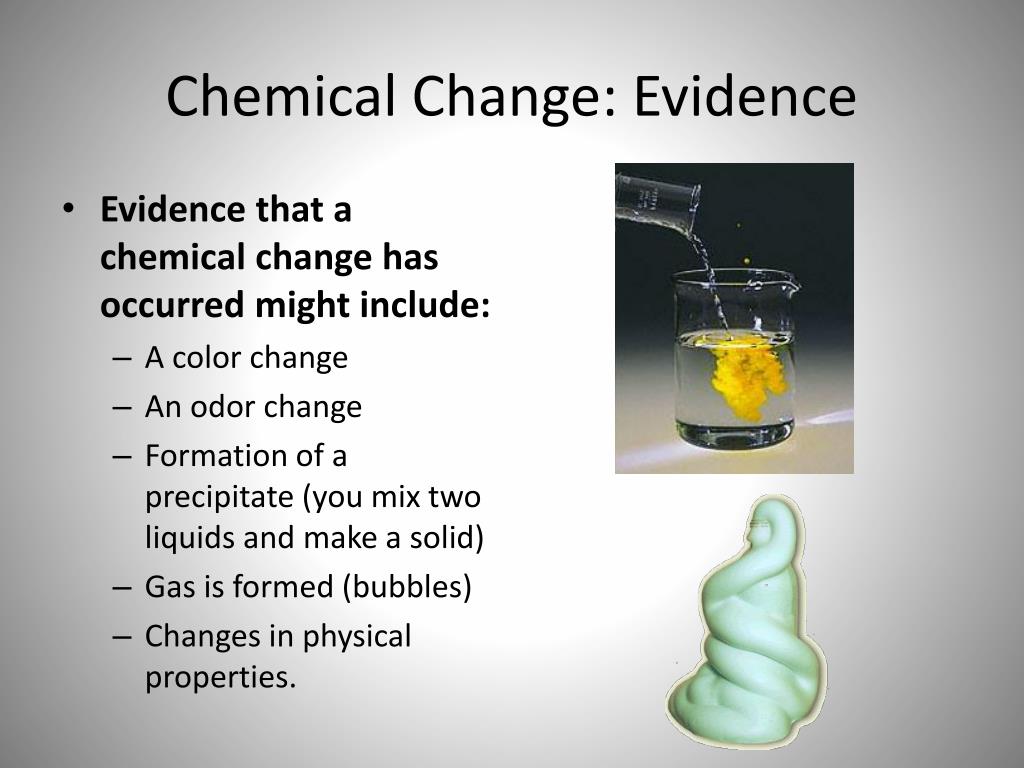
Mercuric oxide absorbs a lot of heat energy when it decomposes into mercury and oxygen.Magnesium produces a lot of heat and light energy as it burns in the air.

(iv) A lot of heat is usually given off or absorbed during a chemical change Similarly, when iron rusts, the weight of rusted iron is more than that of the original metal because oxygen combines with iron. When magnesium is burnt in the air, then the weight of white ash (magnesium oxide) is more than magnesium metal. (iii) There is usually a change in weight during a chemical reaction In this change, sugar changes to new substances and the process are not reversed by reversing the cause. Water and carbon do not taste sweet, and we do not obtain sugar back from caramel or carbon by adding water to it. Sugar on heating gives out water vapour and carbon. On further heating, the caramel in the test tube forms a black substance. Caramel is a different substance from white crystal sugar, which has undergone a chemical change. Gradually, the crystal sugar changes its colour to brown. Heat some sugar crystals in a test tube over a flame. (ii) A chemical change cannot be easily reversed We do not get wax back from carbon, carbon dioxide and water by cooling them or any other method. The burning of wax in a candle is a chemical change producing carbon, carbon dioxide and water vapour. (i) When a chemical change occurs, new substances with entirely new properties are formed Characteristics of Chemical ChangesĪ change in which the original property of a substance being used is changed to new material with new properties. It also emits steam, which is made up of water.

Sugar decomposes into charcoal, which is a type of carbon that is black. The alteration does not reverse after it cools.Īs a result, sugar heating is a permanent change. The residue in the test tube has a dark colour to it. It emits steam when heated further, which condenses on the cooler areas of the test tube. Such changes are called physical changes.Įxperiment: By putting around \(2\,\) of sugar are placed in a hard glass test tube. The changes are temporary in nature and can be reversed. Experiments to Examine Changes in a Few Substances On reversing or removing the cause of the change, the substance regains its original form. No new substance is formed.Ī physical change is a temporary change in which only the physical properties of the substance are changed. In all physical changes, the change is temporary and reversible.

We mix iron filings with powdered sulphur it forms a mixture from which iron filings can be separated from sulphur. Melting of wax and butter is the change of state. This is a reversible change where the form of water changes on reversing the conditions. On cooling, the water vapour cools to form water and water freezes to form ice. On heating, ice melts, and water evaporates. Some physical changes are: glowing of an electric bulb, sublimation of iodine, melting of wax, melting of sulphur, evaporation of water and other liquids, formation of dew, crystallization of salt, freezing of liquids, drying of wet clothes, bending of a glass tube, etc.Ĭhange of state (or form) in water is a physical change. There are two types of changes as listed below:Ī physical change is a temporary and easily reversible change in which the physical properties (e.g., physical state, shape, size, appearance, density etc.) of a substance change. Scroll down to continue more! Types of Changes: Overview In this article, we have provided detailed information on physical and chemical changes. A chemical change is a permanent change in which the chemical composition of a substance is changed. Change is divided into two types namely, physical and chemical changes.Ī physical change is a temporary and simply reversible change in which the physical properties of a substance change. Ice must be heated to melt and turn into water.

Ice, for example, does not melt to generate water on its own. A cause always accompanies a change in a substance.


 0 kommentar(er)
0 kommentar(er)
